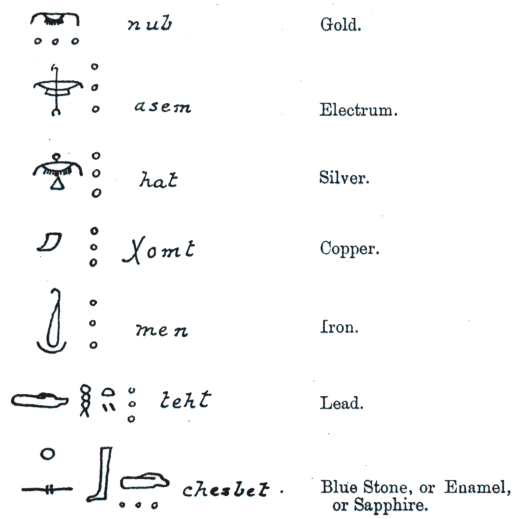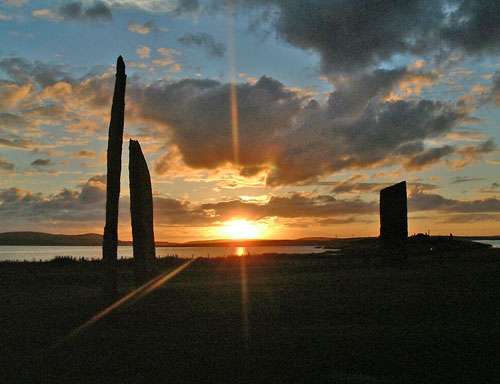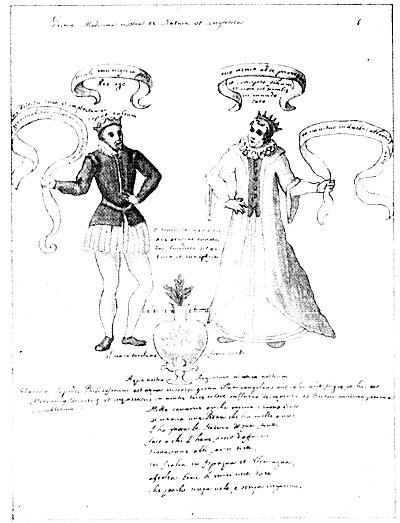p. 97
EACH of the four primary elements as taught by the early philosophers has its analogue in the quaternary terrestrial constitution of man. The rocks and earth correspond to the bones and flesh; the water to the various fluids; the air to the gases; and the fire to the bodily heat. Since the bones are the framework that sustains the corporeal structure, they may be regarded as a fitting emblem of the spirit–that divine foundation which supports the composite fabric of mind, soul, and body. To the initiate, the skeleton of death holding in bony fingers the reaper’s scythe denotes Saturn (Kronos), the father of the gods, carrying the sickle with which he mutilated Ouranos, his own sire.
In the language of the Mysteries, the spirits of men are the powdered bones of Saturn. The latter deity was always worshiped under the symbol of the base or footing, inasmuch as he was considered to be the substructure upholding creation. The myth of Saturn has its historical basis in the fragmentary records preserved by the early Greeks and Phœnicians concerning a king by that name who ruled over the ancient continent of Hyperborea. Polaris, Hyperborea, and Atlantis, because they lie buried beneath the continents and oceans of the modern world, have frequently been symbolized as rocks supporting upon their broad surfaces new lands, races, and empires. According to the Scandinavian Mysteries, the stones and cliffs were formed from the bones of Ymir, the primordial giant of the seething clay, while to the Hellenic mystics the rocks were the bones of the Great Mother, Gæa.
After the deluge sent by the gods to destroy mankind at the close of the Iron Age, only Deucalion and Pyrrha were left alive. Entering a ruined sanctuary to pray, they were directed by an oracle to depart from the temple and with heads veiled and garments unbound cast behind them the bones of their mother. Construing the cryptic message of the god to mean that the earth was the Great Mother of all creatures, Deucalion picked up loose rocks and, bidding Pyrrha do likewise, cast them behind him. From these rocks there sprang forth a new and stalwart race of human beings, the rocks thrown by Deucalion becoming men and those thrown by Pyrrha becoming women. In this allegory is epitomized the mystery of human evolution; for spirit, by ensouling matter, becomes that indwelling power which gradually but sequentially raises the mineral to the status of the plant; the plant to the plane of the animal; the animal to the dignity of man; and man to the estate of the gods.
The solar system was organized by forces operating inward from the great ring of the Saturnian sphere; and since the beginnings of all things were under the control of Saturn, the most reasonable inference is that the first forms of worship were dedicated to him and his peculiar symbol–the stone. Thus the intrinsic nature of Saturn is synonymous with that spiritual rock which is the enduring foundation of the Solar Temple, and has its antitypc or lower octave in that terrestrial rock–the planet Earth–which sustains upon its jagged surface the diversified genera of mundane life.
Although its origin is uncertain, litholatry undoubtedly constitutes one of the earliest forms of religious expression. “Throughout all the world, ” writes Godfrey Higgins, “the first object of Idolatry seems to have been a plain, unwrought stone, placed in the ground, as an emblem of the generative or procreative powers of nature.” (See The Celtic Druids.) Remnants of stone worship are distributed over the greater part of the earth’s surface, a notable example being the menhirs at Carnac, in Brittany, where several thousand gigantic uncut stones are arranged in eleven orderly rows. Many of these monoliths stand over twenty feet out of the sand in which they are embedded, and it has been calculated that some of the larger ones weigh as much as 250,000 pounds. By some it is believed that certain of the menhirs mark the location of buried treasure, but the most plausible view is that which regards Carnac as a monument to the astronomical knowledge of antiquity. Scattered throughout the British Isles and Europe, these cairns, dolmens, menhirs, and cistvaens stand as mute but eloquent testimonials to the existence and achievements of races now extinct.

Moe is the founder of GnosticWarrior.com. He is a father, husband, author, martial arts black belt, and an expert in Gnosticism, the occult, and esotericism.



![How the South Saxons received Eadbert and Eolla, and the West Saxons, Daniel and Aldhelm, for their bishops; and of the writings of the same Aldhelm [705 A.D.] | Book 5 | Chapter 17 How the South Saxons received Eadbert and Eolla, and the West Saxons, Daniel and Aldhelm, for their bishops; and of the writings of the same Aldhelm [705 A.D.] | Book 5 | Chapter 17](https://www.gnosticwarrior.com/wp-content/plugins/contextual-related-posts/default.png)
